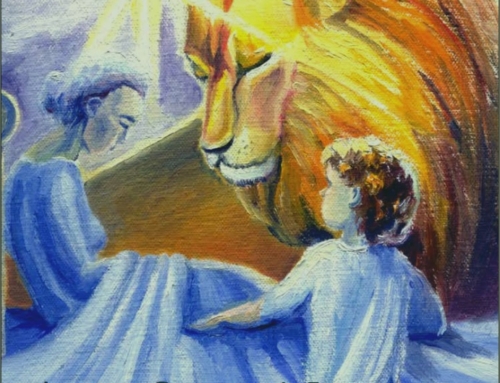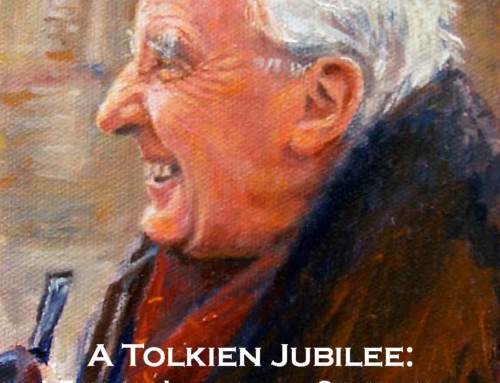I hold in my hands Autumn Serried Woods, a collection of poems by Kai Mills. The poems are in both Chinese and English. I can’t read Chinese, so thank goodness for the English. Yet, as I open the book, I find my eyes are not drawn to the English I know, but to the Chinese I do not know. I gaze upon this volume’s natal language and see its attractiveness and artistry. The compact characters fall into a military array of crisp rows—serried to borrow a word from the title of the book. They closely align and speak of constraint and order. Still, each character within the ranks of the Chinese script stands with marked individuality. They fall on the page with internal dynamic configurations that include horizontal, vertical, and slant strokes as well as peppered dabs and dots. For a moment, I marvel at the wisdom contained within the very look of the Chinese language—“live an ordered and creative life,” it tells us; “be fenced and freed” as a prayer of the Church puts it. This language builds a universal structure from which to speak the particular. The particular, however, is not so easy to decipher. Those individual strokes and dabs, like the strokes of a fine painting suggest movement and meaning. I draw closer and continue to gaze, but of what the page is murmuring in the particular, I do not know. Yet, I persevere.
Turning the pages of this book, I see there is an elegance to the characters. The script makes one wish to take a pen in hand and imitate them. Some look like little houses or partition screens—architectural supports of meaning. Others appear more organic: the bend of a stem, the fall of a leaf. I want to decipher a few.
秋 Autumn
春 Spring
雪 Snow
云 Clouds
I rely on the English for translation, and as I try to copy the words—a start to my own Chinese-English dictionary—I quickly come to admire the complexity of the figures and their individual personalities. Knowing three thousand or so of these figures is considered minimal competency with the language, I am impressed. Chinese figures are not, for the most part, pictographs, but I cannot help but feel that they are “essence-graphs” seeking to capture the being of the idea in its form. And I know these are modern, simplified forms of ancient Chinese script. I think I would like to see the older forms and handwritten forms, as well, just to see what additional insights gazing on them might bring. But for now, I open this book of poetry by Kai Mills, and before turning to the English form of her poem “The Wren,” so enamored am I of Chinese lettering, that I continue to let my eyes feast on the beauty of the Chinese in which the poem was originally written.
As before, the Chinese script remains a mystery. For all I know, “The Wren” could be a poem about telephone poles, but even that sophomoric and crude translation tells me that these characters are carrying meaning. They are trying to tell me something, but there are no cognates, no articles, no stem changes, not even any vowels or consonants. I am defeated, and as I turn my eye to the English to get “the answer” to what these characters mean, I know that whatever is set before me will have left fragments of its essence behind on the Chinese side of the page. So it is with all poetry in translation. We must salvage what we can as we seek to know the mind of the poet through the filter of our own language.
But, happy day. Even the English fragment is valuable. Rich in its very simplicity, a reading of the translation brings reward. “The Wren” speaks of the created world revealing its splendor through humility. There is a favorite theme. Let’s dive in:
In the way of folklore, the images are traditional and universal. The falcon is proud; the peacock is vain, and the wren is lowly. The lines are sparse. The descriptions minimal. The loftiness of the falcon and the beauty of the peacock are what we see, but not what we can enter into. The revelation of the grandeur of the wren, the “it” of the poem, is subtle. The wren, however, lives within his created purpose and as a result, in time, all the land is made beautiful. By attending to his lowly task, the wren has brought heaven to earth. Indeed, the pleasing manner in which the wren fulfills his state causes heaven to come down nimbly, that is, lightly and readily—I would even say with good cheer. And the wren has made this paradise on earth for everyone. This includes the falcon who can now soar over a beautiful land, and this includes the peacock who can now strut through a landscape which worthily complements its own beauty. Happy the falcon and the peacock, but it is the wren that is now lofty in our view. Our image of him is not of a beauty, but of a beauty-bringer. The poem is a lovely, clean and compact image of an old, universal idea of the great worth of the humble and serving spirit.
I cannot help but feel that the trusted and ancient lesson conveyed in the poem grows out of the sturdy script and culture behind the Chinese characters. As a Chinese character lives within its line of script, so the wren lives within its place in the world to the great benefit of all. It is refreshing to the heart to read poetry which reminds us of truths which reside deep within us. There is a respect and restraint in this poetry that gives one the confidence to say that tradition is good and it makes us good, good and strong like the architectural forms of the Chinese characters.
“The Wren” is not the only worthy excursion in this volume of poems. The book is a collection of modern and classical poems, all of which are sparse and fresh. “Warmth on a Snowy Day” conjures atmospheric images of snowflakes “sneakily covering the earth with a silver blanket” and of “crystal trees gently rocking on the white carpet.” The swirl of the metaphors describing the outside environs blends seamlessly with the fire in the home “waving freely and alone with the music melody” and with the poet “immersed in a book.” All is woven together in a final stanza which deftly portrays a simultaneous awareness of these three worlds of created being. It is an admirable and satisfying poem. “Chess Match” presents all the charm of a mock epic, despite its brevity. “Missing Parents in Autumn” is a poignant traditional five-character quatrain in its Chinese form which, like many of the poems in the volume, expresses the poet’s love for distant family and homeland. Also present, however, are a number of poems which convey Kai’s love of her new homeland. The parallel of the two loves set in motion a beautiful tension which resonates throughout the whole of the book.
And just as a reminder to the non-Chinese reader, all of the Chinese script paralleling the English translations is not in the way—like the pages of Chinese in your lawn mower manual, but is a signpost announcing mystery, asking us to be humble before what we do not know, and with all charity inviting us in by providing us with characters we do know and can handle so easily. Ah, the comfort of a-b-c. I do appreciate that 26 letter sequence. I do value the known, even while peering into the unknown. Happily, the Chinese script is a relative mystery. Chinese can be learned and even poetry in translation can convey thoughtful reflection, rhythm, and beauty. What is represented by those essence-graph characters comes through because when we silently look on the realities they point toward—even if in a fragmented and translated form—the truth of those realities will not be hindered by the particular languages we speak.
Kai Mills’ homeland is Nanjing, China. She now resides in the United States. Kai teaches high school Chinese classes, writes poetry, and sings Gregorian chant. She is a board member of the Chicago Chinese Poetry association, a member of the Wisconsin Fellowship of Poets, and the managing editor of the English Poetry Department of Poetry Hall. Her book of poetry, Autumn Serried Woods, was translated by her husband, Scott Mills. She and her husband are both recent converts to the Catholic faith.








Lovely. I want to learn Chinese….